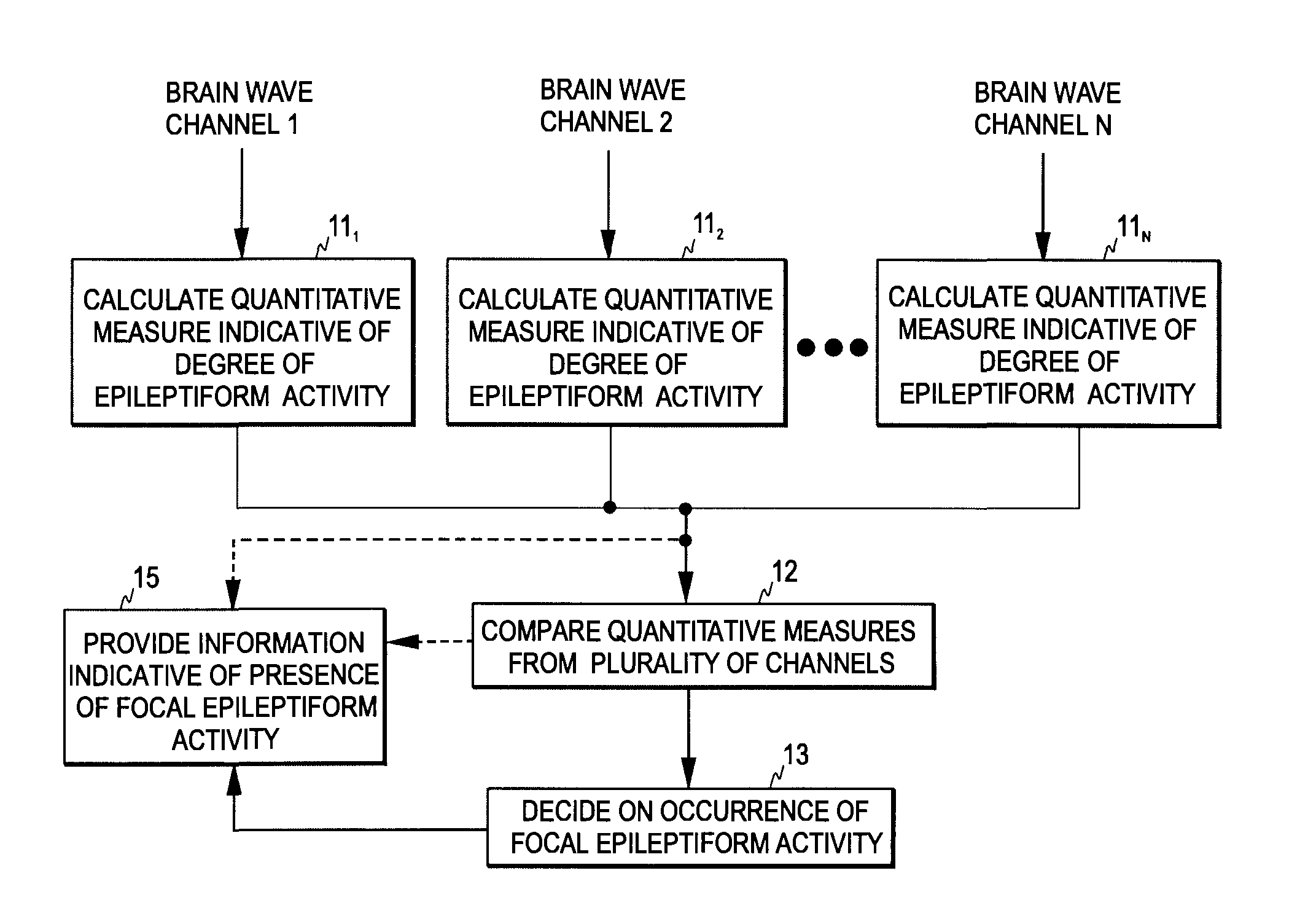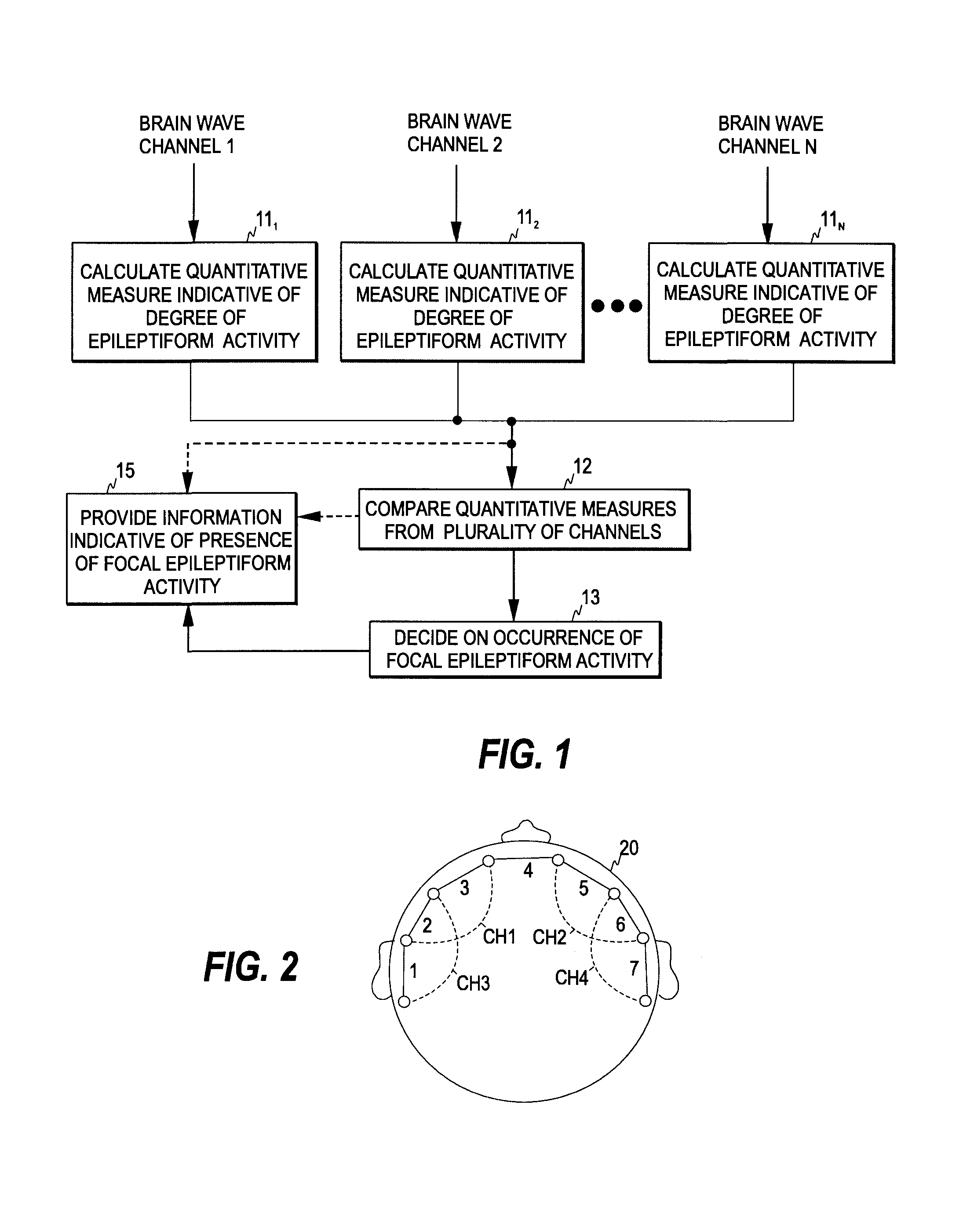Detection of focal epileptiform activity
a focal epileptiform and activity technology, applied in the field of focal epileptiform activity detection, can solve the problems of inability to verbalize an aura, increase the complexity of the signal during a seizure, and disturbed brain function and the resulting eeg
- Summary
- Abstract
- Description
- Claims
- Application Information
AI Technical Summary
Benefits of technology
Problems solved by technology
Method used
Image
Examples
Embodiment Construction
[0036]FIG. 1 is a flow diagram illustrating one embodiment of the method of the invention. In the present invention, N (N=2, 3, . . . ) brain wave signals are measured from a subject. As is common in the art, each incoming brain wave signal is sampled and the digitized signal samples are processed as sets of sequential signal samples representing finite time blocks or time windows, commonly termed “epochs”. Here, each brain wave signal is also referred to as a channel, i.e. each brain wave signal is obtained through a corresponding channel.
[0037]Based on each brain wave signal, a measure indicative of the degree of epileptiform activity is determined (steps 111, . . . , 11N), whereby N signal-specific values are obtained for the measure in each time window. As mentioned above, the measure here refers to a quantitative measure of epileptiform activity, which changes in a monotonic manner on a continuous scale according to the changes in the epileptiform activity.
[0038]Next, some or a...
PUM
 Login to View More
Login to View More Abstract
Description
Claims
Application Information
 Login to View More
Login to View More - R&D
- Intellectual Property
- Life Sciences
- Materials
- Tech Scout
- Unparalleled Data Quality
- Higher Quality Content
- 60% Fewer Hallucinations
Browse by: Latest US Patents, China's latest patents, Technical Efficacy Thesaurus, Application Domain, Technology Topic, Popular Technical Reports.
© 2025 PatSnap. All rights reserved.Legal|Privacy policy|Modern Slavery Act Transparency Statement|Sitemap|About US| Contact US: help@patsnap.com



